“PB165: Interview with Daniel Flynn – Thankyou Cofounder” plus 1 more | |
| PB165: Interview with Daniel Flynn – Thankyou Cofounder Posted: 03 Nov 2016 01:00 AM PDT An Interview with Daniel Flynn – Co-founder of ThankyouIn today's episode, we hear from Daniel Flynn, co-founder and Managing Director of Thankyou a social enterprise that sells consumer products like water, nappies, hand sanitiser and much more here in Australia and soon to be New Zealand. They give 100% of their profits to end extreme poverty. Daniel closed day 1 at our event, a couple of months ago, with the most remarkable of keynotes. The title of his talk was Turning Stumbling Blocks Into Stepping Stones and he spoke about the story of Thankyou, from the very beginning (8 years ago), when Daniel and his co-founders were in their early twenties and stepped up to start Thankyou. His session was remarkable and the most highly rated session of our event this year. In fact, it was right up there with the best session we've ever had in terms of ratings. In this interview Daniel shares a few highlights from the event but also gives advice on:
The other voice you'll hear in this interview is Karly Nimmo who helped me out by interviewing some of our speakers from the event this year. Karly is another of our speakers and is from Radcasters.com – a podcasting school. There's lots of goodness in this interview! It goes about 14 minutes, and at the end I'll chime back in with a few thoughts on what they covered. Further Resources on an Interview with Daniel Flynn Co-founder of Thankyou.co
Full Transcript Compress to smaller transcript view Daniel: I know it's a numbers game in blogging and online it's all about the numbers. When it comes to making a difference, I love the thought of the one. If we can impact the one person, it doesn't sound like much. If everyone did that, our world would look completely different. Darren: That was the voice of Daniel Flynn, founder of an amazing organization by the name of Thankyou who we are so lucky to have as a guest on our episode today. Welcome to episode 165 of the ProBlogger podcast. My name is Darren Rowse. I'm the blogger behind problogger.com, a blog, podcast, event, and job board as well as a series of ebooks, and I keep forgetting to say a real book that you can find on Amazon called ProBlogger. They're all designed to help you to grow as a blogger. To create your audience, to build engagement with that audience, and to make money from your blogs. You can find all the information you need about ProBlogger over at problogger.com. Particularly look for the start here page if you're new to ProBlogger. In today's episode, we do hear from Daniel Flynn, the Co-founder and Managing Director of Thankyou, a social enterprise that sells consumer products. They started out selling water but have moved on to many other products like hand sanitizer and even recently have launched a whole baby line of nappies and other baby products. They sell here in Australia and soon to be in New Zealand and I suspect you might see them oversees internationally over the years too. They give 100% of their profits to end extreme poverty. Whilst they started out small as just a three young people in their early 20s, they have really found a foothold here in Australia and they're in all major supermarkets. Daniel closed day one of our event a couple of months ago, the ProBlogger event, with the most remarkable of keynotes. The title of his talk was Turning Stumbling Blocks Into Stepping Stones. He spoke about the story of Thankyou and took us right back eight years ago when they started out, when he and his co-founders were in their early 20s and they stepped up and started Thankyou. His session really was remarkable. He was the most highly rated session of our event this year. In fact, it was right up there with the best sessions we've ever had over the seven years of the ProBlogger event in terms of ratings. In today's interview, Daniel shares a few of the highlights from the event but also gives us some advice on getting out of our comfort zones, the importance of being a leaner, celebrating the wins before moving onto the next thing which is something I'm guilty of. He gives a powerful tip for those struggling to have enough time in whatever it is that you're doing. Whether you're starting a startup like he has been for the last eight years or whether you're a blogger or podcaster or something else. He also gives a tip on confronting fear. The other voice you will hear in this interview as you have heard in a few previous interviews is Karly Nimmo who helped me by interviewing some of our speakers at the event this year. Karly is another of our speakers and is from radcasters.com, a podcasting school. There's a lot of goodness in this particular interview. It only goes for about 14 minutes but they do pack a lot into it. I do encourage you to stick through to the end. I would chime in at the end with a few thoughts of what they covered. There's a few things that he said that I was furiously taking notes on and want to apply in my own business and life. I hope you will enjoy this interview. If you do want to find out a little bit more about Thankyou, you can find them at thankyou.co. I'll talk to that at the end. I'm going to hand over to Karly and Daniel. Daniel: My name is Daniel Flynn, one of the Co-founders and Managing Director at Thankyou. We're a social enterprises that sells consumer products and gives 100% of the profit to helping end extreme poverty. Karly: You were totally a highlight, by the way. I went to your session. Can you tell us a bit about what was it on? Daniel: I ought to share our journey, of Thankyou really. The theme of the talk was around turning stumbling blocks into stepping stones. I think our journey like maybe many people listening, it wasn't a smooth sailing. We had so many moments where we wanted to give up. These stumbling blocks for us were big enough to give up but we pushed through. We learned from them each time and now we have a pretty interesting story that is succeeding in some of the biggest supermarkets in Australia, products that are outselling global competitors. We hear a lot of nice things that about the organization which is amazing but that's after eight years. The journey of persistence, of getting up and going again. That's what I shared today, and also just really putting the thought out there that we can all make an impact bigger than just us. I know where it's a numbers game in blogging and online, it's all about numbers. When it comes to making a difference, I love the the thought of the one. If we can impact the one person, I know it doesn't sound like much. If everyone did that, our world would look completely different. We can never just look at big problems and be paralyzed, we've got to take a step out, share some stuff like that. Karly: My next question was really what would be one thing that you want them to take away? I guess that would be one person can make a difference. Daniel: Look, one person can make a difference. It's the thing really of our organization and our brand. It's a real takeaway. I think the other thing, the event, not a business head on but essentially that growth mindset on. We talked about getting out of your comfort zone and staying out of your comfort zone. Really, that's our journey. Even today, we do launches that get great PR, great marketing, and great cut through but they are so uncomfortable. They really stretch us but if you're going to make your idea and dream reality, you've got to get comfortable with that very uncomfortable feeling. Karly: Yeah, for sure. For me, what I took away was that idea of disruption. You're like, "How can we do this differently?" "How can we cut through?" That was so powerful to hear. Also, I just think like that story of failure. Everyone on the stage, myself included, have had that. That slugging that through but moving forward regardless. Then not allowing failure to define your future and make that up yourself. Daniel: I think it is the story of every great organization, dream persons. Some people get a quicker trajectory, a quicker initial launch. I definitely sat back for years in the edge and then going how come they got to just year one, a million this or that. Everyone has a different journey, a different story. We got to embrace the uniqueness. Karly: What has been a highlight of you from the comfort so far? Daniel: At Thankyou, we talk about learning. It's one of our values which sounds like a bit of a boring value for such a disruptive organization. Learning is what we had to do at the beginning because we didn't know what we were doing. It's what we have to do now still because we still don't really know. We know more than we knew, but every single day is an opportunity to learn. I think for me, I was in Nathan's session yesterday and I was literally just like, "My mind's going to explode with all the things we need to do to improve." He's just sharing all the journey of founder and essentially all the case of success. I'm messaging a marketing manager. Do we have this? Are we using this? Are we using that? She said yes to a lot of stuff but there are still things that we learned. I think conferences, podcasts, blogs, it's about continuing to develop because if you don't grow, you will not be able to grow your idea kind of further than you grow. Karly: I think it comes down to session here or the conferences. This reminds you of the possibility and opportunity. Daniel: Yes, it does. I think when you see someone else's story, you bump into someone else, they could be a speak, they may not be. I've had some great stories off the stage that you go, "Huh, that is awesome." It motivates you, inspires you, or it challenges you. How can I think different? Karly: Cool, love that. Have you had any major a-ha moments while you've been here? Daniel: When I got up on that stage, I thought to myself a few things, one this is a big room of people. I'm new to blogging. You're interviewing a blogger here, don't ask me too many questions about. We have an organization that's parting with bloggers, parting with influencers. I say influencers, I mean like you could have ten people following you, that's influence. You have 100,000, that's influence. To stare down that stage and to see how many different influencers are in different circles? This is amazing, so cool as a community. For me, it's like Thankyou could go so much further if this community backs it. For me, I was like, "Wow, our world is big even here in Australia." It's just so cool to see the diversity. Karly: One tip for someone who's just starting out on their journey, whether that be a blog, a podcast or a startup venture. Daniel: So many tips, I'm just going to give this one. The tip to get started is get started. Get out, get off, just do it. It is the hardest part. There's so much build up to that moment of actually starting. In fact, I met a girl yesterday. She was like, "Ohh yeah, I've got a blog post." She hasn't publish them yet. I get it, it's a scary moment, the very first post, the very first page, it's so scary. If you don't hit that hard, you're delaying your learning process, you're delaying everything you need. At first pitch, I was so nervous about it eight years ago. Really, it wasn't that pitch that made or broke Thankyou. It's everything that came from that. If you get started now like as in the moment you stop listening to this, get out, start the new idea or the new part of your venture. That's one of the greatest case. Karly: Totally. What do you wish you knew in the beginning? Daniel: I think a lot of our failures now have really defined us and we really learned from them. I wish we knew some stuff that we didn't have to fail so many times. I actually don't think we'd have the strength we have now. In fact, Apple, they just launched chapter one. The only reason that's even a book or it's content is because we just failed so many times. Now, there's a great story to spread. I don't really want to undo that. I got really challenged by our mentor once we caught up, it was the first catch up. He's the chairman of some huge investment bank. His opening question, "Do you celebrate the wins?" I was like, "Yeah, yeah, yeah. Cool." "What was the win? What day did you celebrate? How did you celebrate it?" Karly: Yeah, that's a big A because usually I'm like, "Wooohhh," then move on to the next thing. Daniel: He caught me on it. I looked at him blankly, I had nothing. Essentially I was like, "Wow." I was the guy and sometimes I still am. I've got to get this out of me but when we think of wanting to grow in vision, it's like, "Ohh yeah, it's cool. We got a product in this one way retailer. Now, we need to outsell competitors." Then, we need another retailer and you're always moving forward. If you don't stop and celebrate the wins, you will not enjoy the journey. More importantly, the people around you won't either. For the sake of our team, we had to stop and celebrate the wins. We got a celebration on Monday morning, two days time, three days time celebrating the big win we've had with our chapter one launch and baby range. We got 50 staff stopping. We're all going out for breakfast, we are going to hang out and celebrate. You have to do it. Karly: Totally. Actually, that just reminded me while you were speaking about that, you've got a young child. I have a toddler. We celebrate those moments in our lives, don't we? Daniel: Yeah, so true. Karly: We really sit in it. But then when it's our own stuff, we just move on so quickly. Daniel: I think we move on because in our minds, people around us will celebrate, "Ohh great effort, great post, great engagement. That went viral." You're like, "Yeah, yeah but you don't know how much more work there is. You don't know how far I've got to go." Sometimes just because we know that, it robs us of the moment. We got to stop to celebrate it and then go again. Karly: Love it. What do you think has contributed to your success so far? Daniel: Other people. I think other people have contributed to our success so far. I think from mentors as I mentioned, people who have decades of experience willing to drop one line either in person or over coffee or through a book. Some of my greatest lessons learned, I've never met the people but I feel like I know them because I've read their story. That is contributed to me which is contributed to the vision. The Thankyou story is it's a collective of people. From now, hundreds of thousands, really even millions of consumers to creative designers, to videographers. Helicopter pilots that once backed out our campaign flying helicopters for free with huge signs. I look at the collective of other people. That's what made this successful. Sometimes, it feels really lonely, especially early days. It's like, "No one gets it. No one gets me. No one understands." Actually, if you can move past that, for us we realize this is huge. There are so many people involved and that's what's built to our success. You've got to tap into it, focus on that. Karly: Cool. What did you really suck at in the beginning? Daniel: In the beginning, I really sucked at detail. This is on a personal level and I still do. I'm trying so hard. I lost my room key last night. I couldn't find my wallet, I left my lanyard. Detail is for me a bit of an Achilles Heel. In the organizations, as we have, that's pretty dangerous. We've got a phenomenal team around me who are great with detail. That's backing kind of my weakness. I think in the early days, as an organization, we didn't know what we didn't know. In one sense, we said things in meetings that we should know so it kind of sucked out knowledge. At the same time, I loved it, I love it. Because it was like, what was our weakness became our strength. We asked the things we shouldn't have, we pitched things we shouldn't have, and we got them. We try and replicate that now years later now that we're growing up and we're getting all more professional and stuff and we're trying to keep that. Karly: The naivety. Daniel: Yeah, the naivety. Karly: Lastly, there's two main things that we kind of see. Anyone who is trying to move forward, whether it's a blog, or a podcast, or doing a Facebook Live, that is like the time factor. Time is an issue, the other one is fear. I'd love it if you could give us a tip on how to move through both. Daniel: I think the most powerful word in building ideas, running businesses, organizations, blogs and anything, the most powerful word is no. I know it's wishing gets the opposite, it's yes. Yes, yes, yes, yes, yes, yes I'll do it, yes to opportunity, yes, yes, yes. Actually though, if we become yes people, and I was one big time. Now, I say no a lot. It kills me but I want to say yes to that person or that opportunity. If you do, you rob yourself of the time it takes to deliver what you need to deliver. You might be pleasing a whole bunch of other people and other groups, but you're not actually delivering what you know you need to deliver. The power of saying no to something else to protect your time is so crucial. That's time. When it comes to fear, this is really personal. I bumped into [00:16:43] yesterday who's on the panel about 15 minutes. She's on the panel with our brand director Justine and my wife. She said, "I'm on a panel with you and your wife and I’m so nervous." I said I know what you mean, she's a bit surprised. The fear thing, it can get all of us. In the early days, I said I'd never do public speaking. I shared this is the room yesterday. That for me was in year 10, 11, I haven't develop this really strong list. I'm so self conscious of my words. I did speech pathology and that eventually kind of helped. I didn't want to get up in front of more than three people. What if I messed up my words? I think now I get invited, sometimes they introduce me as a professional speaker. I'm just thinking LOL in my head, like this is ridiculous. I'm speaking to a few hundred or ten or a few thousand people. I've had to overcome this fear. We all must. I think, how do we overcome fear? Of course, surround ourselves with great people who believe in us. There are moments before a talk and I've looked at Justine who's one of our co-founders but also my wife. I'm like, "Man, I'm scared." "I know you've got this." I should know I've got this but that encouragement to kind of push that fear aside is really powerful. Protect your time, say no. Get great people around you because fear does come after all of us but we have to push through to achieve anything remarkable. Karly: Cool, thank you. Darren: I just love that interview with Daniel and Karly and love the session that Daniel did at the event. You can actually get access to that session by purchasing the virtual ticket for our event which gives you access to that session and all the others that we did over the two days. You can find more information on how to grab that at problogger.com/virtualticket. There are a few things in that particular episode that I felt almost compelled to write down and really ponder. One of them particularly was the idea of celebrating the wins. For me, that was something that I found really hit home for me because I'm someone who does celebrate the win in the moment but always am looking on to the next thing because I do have fairly long term plans. I think I need to perhaps just pause and celebrate a little bit more particularly with my team. It's something that I'm going to take away from that particular one. Also love the idea of making a difference to one person. I actually said this at a conference a few years ago. If your blog just has one reader, that might be enough. That one reader might just be the reader that takes your advice and changes their life because of something that you say. That one reader might be the person who has an amazing network and passes on word to their network of your blog and could be that one person that you need to tip your blog into having lots of readers. That one reader might be someone who becomes a friend, a partner, business partner, personal partner. That one reader might be enough in many ways. Many times, we do as bloggers struggle with the idea of needing lots of readers. It might just be that the one that you have is the right reader. For a variety of reasons and particularly in terms of making the world a better place, Daniel is certainly on about. The advice of getting out of your comfort zone and get comfortable with feeling uncomfortable is so important. I particularly liked his tip about saying no. Again, that's something I struggle with. I’m a yes man. Often really struggle to say no and it really reminded me of what I was talking about just an episode or two ago about me creating my schedule. Really, I guess in creating a schedule, for me to manage my time, I'm thinking about what are my priorities, what do I need to get done. Creating a schedule around those things, in many ways, that was saying no to other things, other things that would cramp those priorities out. For me, that's a practical way of saying no. I don't have an opening in my schedule to be able to take on the opportunities that come my way if they're not aligned with my priorities. Maybe that is a way if you do struggle to say no, maybe you could put a schedule together that helps you to say no and to gather those things that do really need to happen. If we become yes people, we rob ourselves of the time it takes to deliver what you know you need to deliver. Those were the words that I wrote down from Daniel. I hope you enjoyed today's episode. If you want to find out more about Daniel and Thankyou, please check them out at thankyou.co. If you want to connect with Karly and learn about podcasting, you can check out radcasters.com. If you want to check out the virtual ticket for the ProBlogger event, it's problogger.com/virtualticket. I hope you enjoyed today's interview. We'll get back to you in a couple of days time with another teaching episode here at problogger.com. Thanks so much for listening. I'll chat with you soon. How did you go with today's episode?Enjoy this podcast? Sign up to our ProBloggerPLUS newsletter to get notified of all new tutorials and podcasts below. The post PB165: Interview with Daniel Flynn – Thankyou Cofounder appeared first on ProBlogger Podcast. This posting includes an audio/video/photo media file: Download Now |
| The Ultimate Editing Checklist for Content Marketers Posted: 02 Nov 2016 02:28 PM PDT This is a guest contribution from Benjamin Brandall. Unless you're writing instructions or technical copy, writing is a creative process. When writers are in the flow, they work in bursts of energy, hammering out paragraphs without stopping to think about editing. Unedited writing is, in the words of Annie Lamott: shitty. And so it should be. If you're stopping every three words to check what you're doing, you're going to take days to write a disjointed, awkward piece. That's where using an editing checklist comes in. Editing is a misunderstood practiceA common misconception is that editing is looking at the spelling and grammar. Maybe in the days before word processors, that's what it was, but now we have Grammarly, Google Docs and a wide range of tools to help us fix common errors in seconds. What's important for the post-Grammarly editor is style, fact-checking and readability. Some of these elements are technical, and you can reduce them to a formula, but as I've learned since being the gateway everything on the Process Street blog goes through before publication, you can’t ‘teach’ style. In this article, I want to share with you an internal process I've developed for editing articles and hope that it helps you, too. It includes:
Part 1: Copy editingSince this part is going to take the most amount of time, it's best to get it out of the way right now. Analyze the article's structureWe know this one from school. An article should have an intro, where it gets the reader's attention, conveys the value of what they're about to say and sets expectations. Then, it should go on to make a series of structured points, all living up to the promises of the title and intro. To wrap things up, you need a conclusion to summarize your points, call the reader to action and leave them with something to think about. (Source: Lotem Design) For more information about article structure, check this out (which, of course, has a great structure). Check spelling and grammar with GrammarlyAs I was saying, editing isn't only spelling and grammar, but it is part of it. It's the bare minimum, and will catch the most obvious mistakes in the eyes of the reader. Check you've corrected all the words and phrases flagged by Grammarly. Grammarly isn't perfect, but it's the best tool around. It'll catch incorrect comma placement, confused words and all spelling errors, but it doesn't compensate for that alchemical ingredient — style. After reading through the article once with Grammarly and making corrections, move onto fact checking. Check for inconsistencies without GrammarlyGrammarly can't flag everything up. As pointed out by Ian Luke on ProBlogger, some terms like ebook / e-book / eBook are a matter of taste, not concrete. Grammarly or another spell-checking tool could miss that, so you have to turn it off sometimes and let your brain do the work. Fact-check the articleThis step is far more important for news pieces than personal blog posts, but you do always need to make sure you’re backing your facts up. A good method of catching opinion presented as fact is by asking yourself "how do you know this?" for every statement you read. Check all numbers, facts, quotes and percentages have a source link. A good way to find a citation for unsourced statements is with Google Docs' research toolbar. It brings up a mini-version of Google search in the right-hand pane and you can search keywords to find a source to back the claim up. Ideally, however, your claims will come from sources in the first place. Remove filler words (especially adverbs)There are, there is, however, regardless, perhaps, possibly, rather, a bit, well. Filler words make it sound like we're nervous about what we're writing, and adverbs don't often add anything to the sentence. Here's a list of the scoundrels: 297 Flabby Words and Phrases That Rob Your Writing of All Its Power. It's not reasonable to expect you to check for all 297, but check that list of filler words while editing to get a feel for the words to cut. Convert from the passive to active voiceThe passive voice is unclear. It either clouds the facts of what you're talking about or sounds long-winded.
Passive: The window was broken. Active: Ben broke the window. Passive: The ice hockey match was hosted by Russia this year. Active: Russia hosted the ice hockey match this year. Seek and destroy passive sentences. Cut out the clichesIf you condense Orwell's fantastic essay "Politics and the English Language" down to just a few points, a major one would be: What do I mean by cliches? I don't think I could do a better job than this huge list of 681, to be honest. So, let me give you a few examples and leave it at that.
When you read a cliche, your brain shuts off and doesn't cognate the meaning because it's seen the phrase so many times. You don't want your readers to switch off, do you? Weed out weak verbs and adjectivesOne strong word can replace three weak ones with ease. Instead of padding writing with adverbs, adjectives, and extra fluff, use strong words to convey meaning.
A good way to CTRL+F for these is to search for 'very', 'quite', and other useless modifiers. Don't stress over commas, but be consistentI know, I said already to use Grammarly early on to catch grammar mistakes, but one debatable rule concerns commas. Since we're writing to be read, not to pass an English exam, ensure the writer uses commas to help the text flow. The AP Stylebook advises against it, whereas Oxford University demands it, so pick your side. As long as you're consistent in your usage, it doesn't matter. A writer's aim is to put their thoughts into words. If you're going mad working out whether to adopt the Oxford comma, ask yourself the question: "Will it help the reader understand my point?". There are many cases where it does. To use Grammarly's example:
Which is less confusing? Type like you talkConvert your cognitions into words befitting of the common vernacular. Write using everyday language. If you're trying to think of more intellectual-sounding synonyms, don't bother. You don't become an authority by alienating your audience. Type like you talk. For a solid guide on this topic, read William Zinsser's On Writing Well. Self-editing? Leave the article for at least a dayWriting is a draining process. If you're anything like me, you'll not have the energy to edit after the wide-eyed coffee-fueled writing process. You'll also be too attached to the piece to be objective. After a day, when you re-read the article, you’ll find parts of it that you hate, and it'll be obvious passages need rewriting. “The professional writer says, 'It is almost certain that most of what I write will not resonate with most people who read it, but over time, I will gain an audience who trusts me to, at the very least, be interesting.'” — Seth Godin Part 2: Editing for SEOWriting with SEO as a key concern is the simplest way to… write slow, awkward articles. Others might disagree, but I find that on-page SEO is much easier to edit in than to keep as a consideration all the way through. Maybe you're writing an article with a keyword already in mind? That should be more than enough preparation because the whole article is what you're targeting. After the copy editing, it's time to add in on-page optimization for search. Backlinko recently updated its mega-guide to on-page SEO with an amazing infographic, so let me break that down into action steps for editors. Put the keyword at the start of your H1 titleSearch engines put more weight on the keyword in line with how early on in the title it occurs. While it's not an exact science, it's best to put the keyword in the first half of your title. For example, instead of ’10 Checklists for to Help Your Startup With Employee Onboarding‘ edit this to '10 Employee Onboarding Checklists for Startups'. Additionally, your title should be in H1. This is very likely a default if you use WordPress, but check and make sure in the HTML of your article in preview mode to see that the title is wrapped in <h1> tags.
Make sure the slug is only your target keywordInstead of your slug (everything after your domain.com in the article URL) looking like this: example.com/blog/catgories/editing/checklists/2016/01/editing-checklist-for-content-marketers-and-their-mothers Set it to be just this: example.com/editing-checklist Not only does it look better and is easier to remember, search engines prefer it. Include images, videos, infographic, embedsAs well as not boring your reader to tears, multimedia increases time spent on the page, which signals to Google that the post was interesting enough for the user to stick around. A 2-minute video could increase the time on page by that time, for example. Plus, media breaks up the text and makes the post scannable. A reader scrolling further down the page is another signal to Google of quality content. Straighten up your subheading hierarchyWith your title tag in H1, you need to make sure that your subheads are in H2 and any sub-subheadings in H3. As a general rule, you can never use an H2 without an H1, never an H3 without an H2, and so on. This should come naturally if you structured the article properly in the first place. Use your exact keyword 2-3 times in the bodyYour keyword should appear in the body 2-3 times. It's important that one of these occurrences is within the first 150 words of the article. This will also force you to cut the intro down and get to the point, which never hurts! To check this, CTRL + F your keyword. Use 2-4 outbound links every 1,000 wordsIt's well known that outbound links (to sources or further reading) increase the authority of the article because Google knows it's well sourced. A new guideline from Brian Dean gets more specific. Brain recommends you use 2-4 outbound links in every 1,000 words you write. If you're writing a well-sourced piece of work, you shouldn’t have to work hard for this. Internally link (like Wikipedia)Golden Age SEO Joke: How do you get 10 backlinks in one post? Internal linking, my good mate! Believe it or not, even Wikipedia has an SEO strategy, and internal linking is a big part of it. Why? Because link juice flows through your pages according to where they link to. So, if you get backlinks to a page with plenty of internal links, the authority passes to the pages you linked internally.
Part 3: Optimizing Your VisualsVisuals increase people's willingness to read your content by 80%. Garbage visuals, however, do you no favors.
Please… Get rid of those stock imagesAt Process Street, we have a general rule that helps our blog posts not look godawful. All images should either be custom graphics or screenshots. Just take a look at this collection HubSpot put together of 13 hilarious stock images. Want your blog post to look like a non-parody version of that? As Kathryn Aragon says, images should not be:
The point is, stock images are shoved in for the sake of it. What could a clinically smiling guy with a briefcase be illustrating to the reader? (Apart from 'the person who wrote this hates good things'.) Make sure your media fits full-widthThere's something visually pleasing about aligning your text with your media by keeping both the same width. Depending on the column width of your blog, make sure your image will fit. For a visual reference, the column width of Process Street is 800 pixels. You want your images to look like this: Not this: (sorry, quaint farming blog :( ) Use a wide range of visualsThis might seem like I'm assuming you all have no attention span, but seriously, a variety of visual stimuli is better for reader engagement. Try to balance between:
With a range of media, you're more likely to keep readers on the page. If you've got relevant podcast episodes or audio of some sort, these are also great to embed using a service like Soundcloud. Optimize your titles and alt textIt's important to optimize your image titles and alt text for a couple of reasons. Firstly, it aids your on-page efforts as I talked about earlier. If you have supporting alt text in line with your keyword choices, then it boosts the optimization of your page. Secondly, you get the chance to rank your images in Google Images. People don't often talk about image backlinks being important, but Process Street consistently gets a few solid links per month thanks to custom image attribution. If those images weren't properly optimized with alt text and titles, the linker wouldn't have known they exist. Keep custom graphics consistentAt Process Street, we have a selection of backgrounds and SVGs, used in conjunction with three main colors and one font. That keeps our images consistent, but not uniform enough to be boring. This step stems from the need for having a solid visual style guide for your brand and blog. For more information about the power of visual content and how to create it, check out this infographic from Digital Information World. If you don't have brand guidelines to refer to, you can create some. They don't have to be fancy 30-page PDF documents like this one (screenshot below) but use those for inspiration. Here's a simple image I use to share with writers making custom images for our blog. It shows the hex codes of the three main Process Street colors, and the font used is Cabin. Having resources like that for writers to refer to will save plenty of time in the editing process on your end. You can’t edit a bad post into a quality postAfter all this, there’s something to be wary of — you can’t edit a bad post and turn it into a top-notch post. Editors traditionally start as writers because editing is harder. It takes a keen eye, great taste, and strong analytical skills. If you’re an editor working alongside a junior writer, the best course of action while running this checklist is to add comments (either in Google Docs or screenshots with annotations) to help the writer improve. Editing in silence doesn’t help the writer get better. Get this post as an interactive editing checklistClick here to get this guide as a checklist you can run through for every post you edit. It's handy for teaching new writers, and also training yourself to be a tougher editor. Bear one thing in mind…Did you find this post useful? Do you have anything to add? Let me know in the comments, and we can have a chat. :) Benjamin Brandall is the head of content marketing at Process Street. When he's not at work, he runs obscure entertainment blog Secret Cave. Find him on Twitter here. The post The Ultimate Editing Checklist for Content Marketers appeared first on ProBlogger. |
| You are subscribed to email updates from ProBlogger. To stop receiving these emails, you may unsubscribe now. | Email delivery powered by Google |
| Google Inc., 1600 Amphitheatre Parkway, Mountain View, CA 94043, United States | |




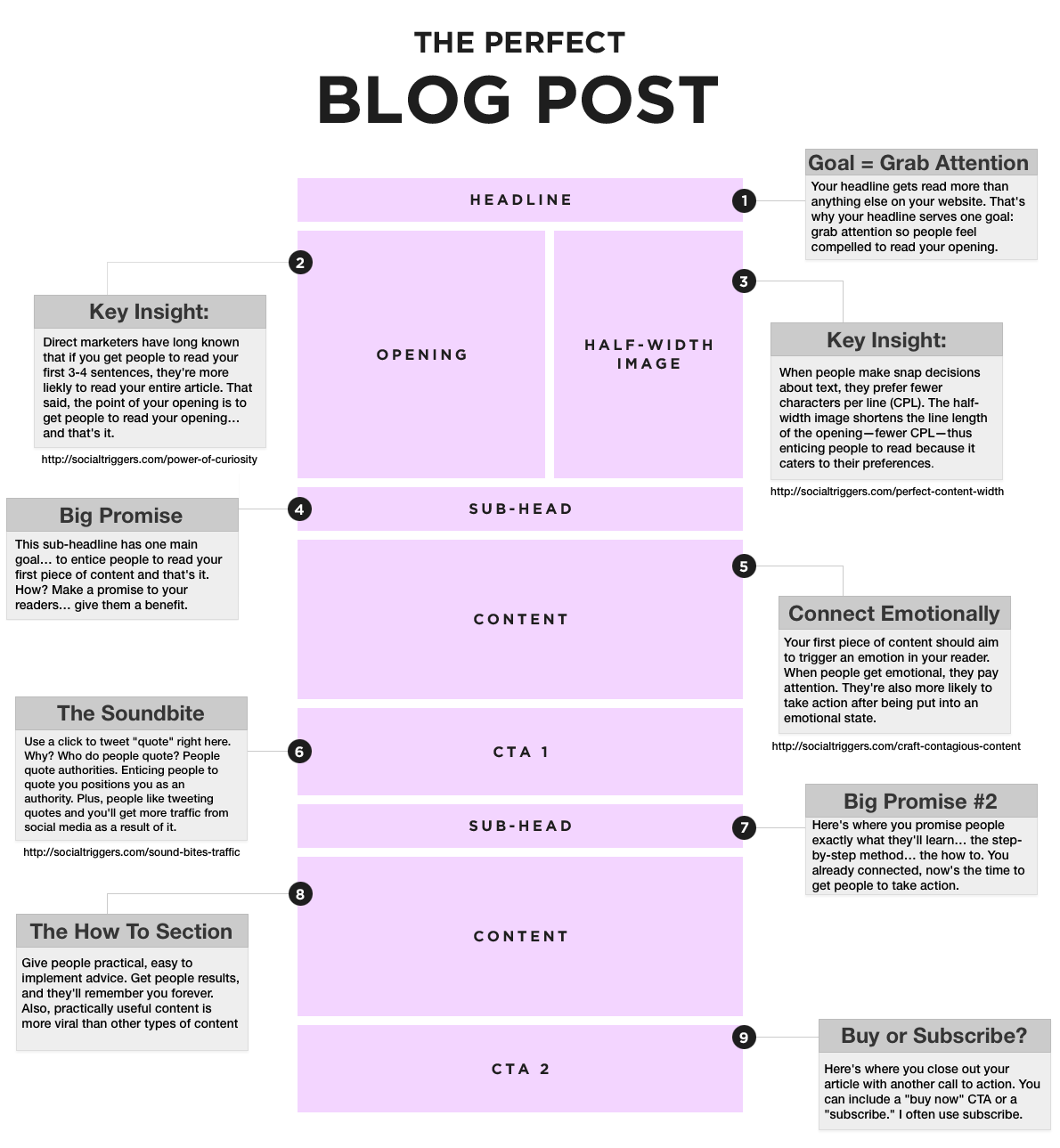
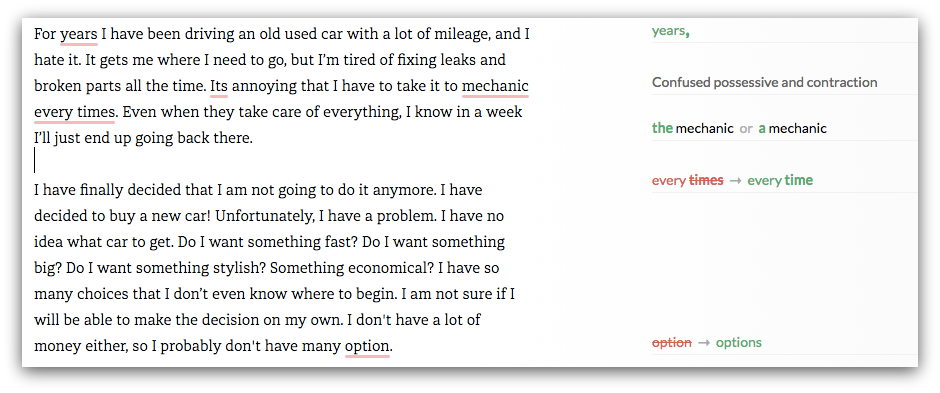
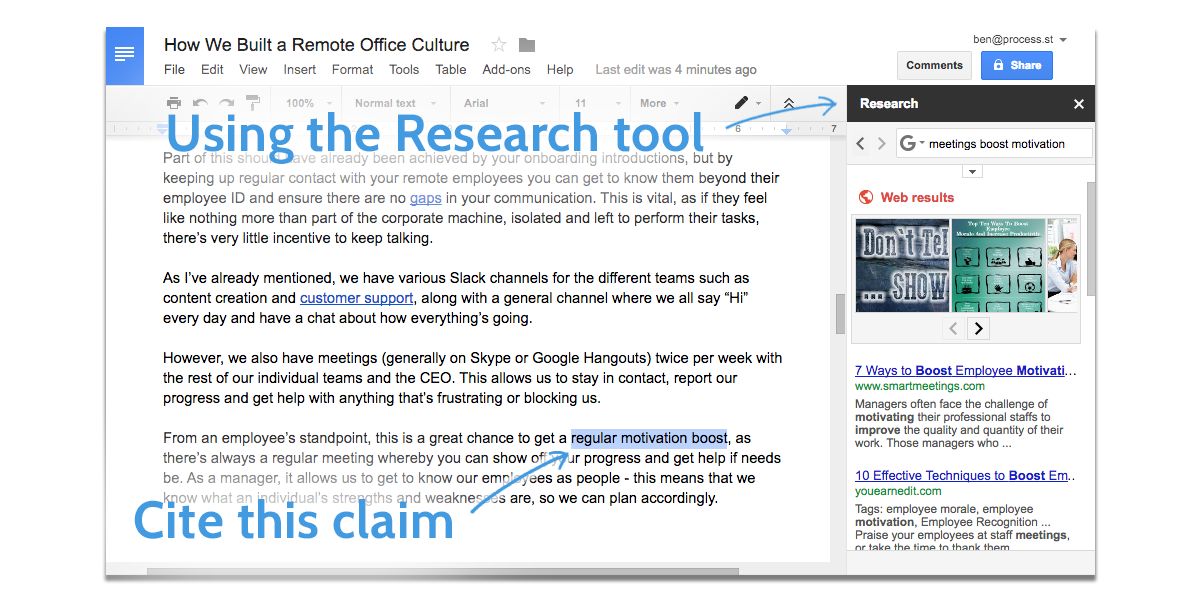
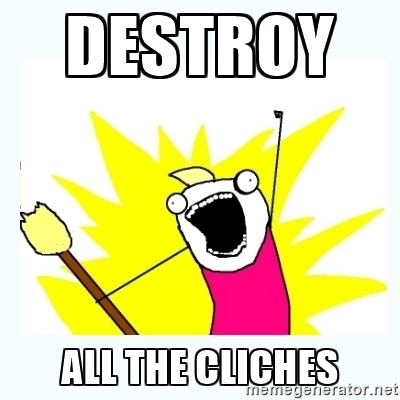

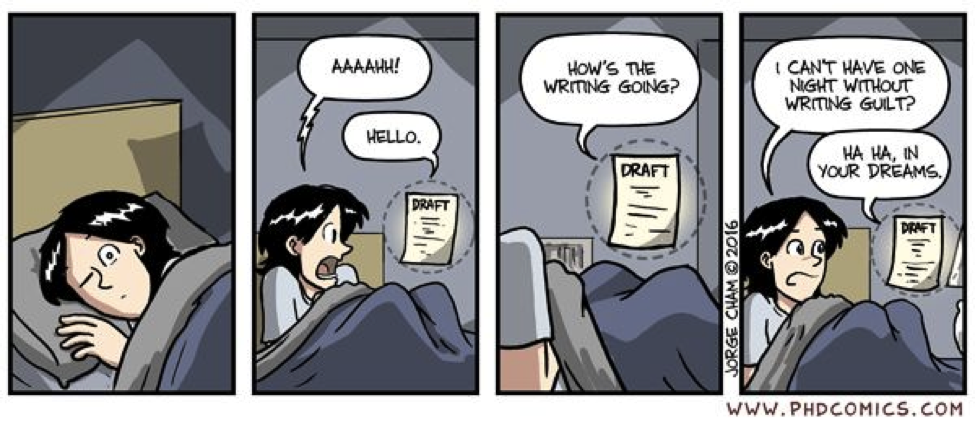
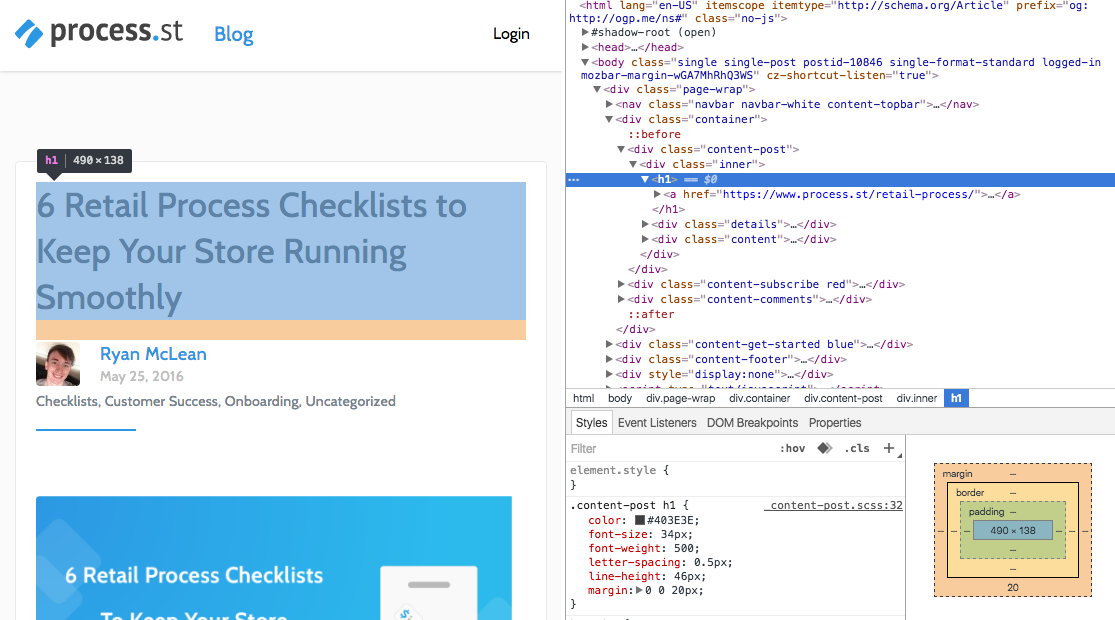
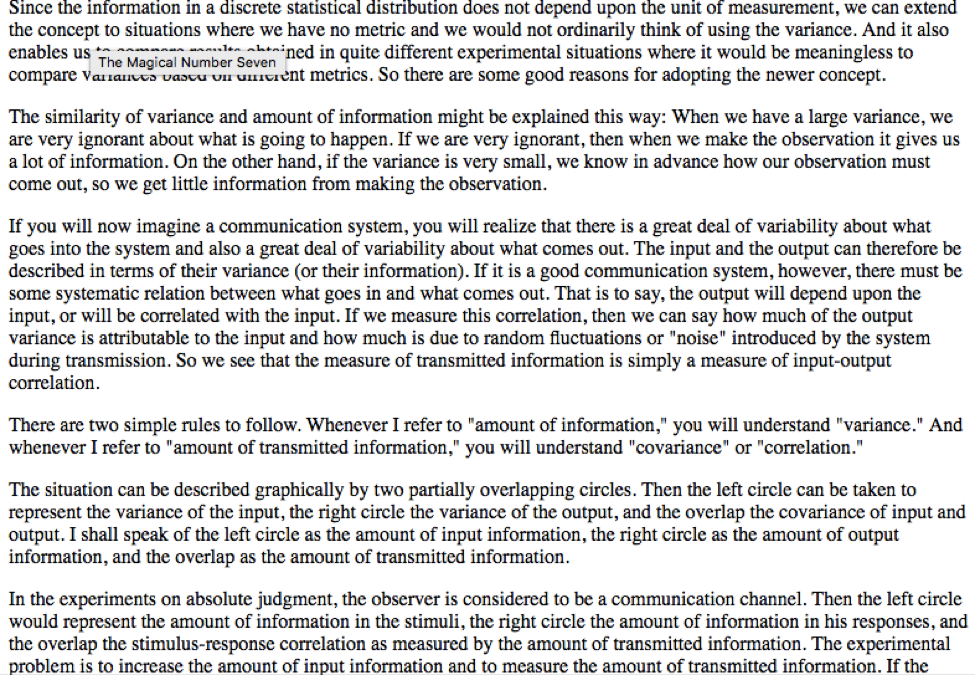

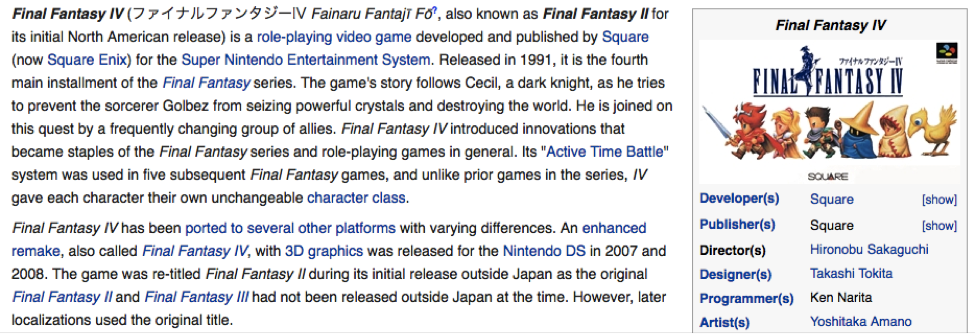

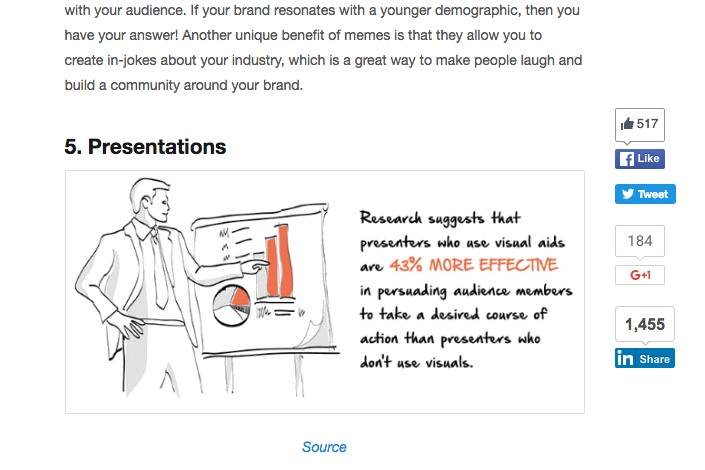



0 comments:
Post a Comment